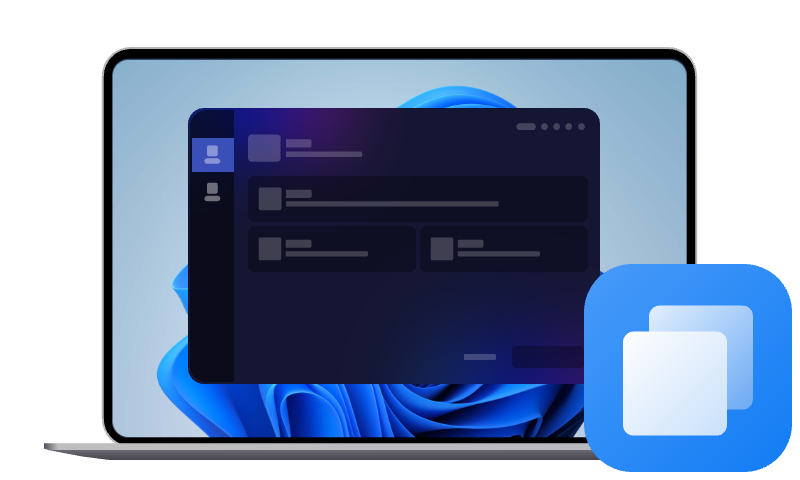Migrate User Profile to New Computer Windows 11 [Full Guide]
This article discusses some of the popular methods for migrating user profiles to new computer on Windows 11, aiming to find out the best ones and how to perform it step-by-step.
Migrating user profile to new computer on Windows 11 ensures everything is set up just the way you likewhile upgrading or replacing old computer, or your computer is running slow.
You don’t need to manually reinstalling apps, transferring data, and setting up accountsand preferred settingsfrom scratch, saving hours of transition time and maintaining a consistent experience across devices so you can get back to work (or gaming) faster.
3 Common Methods to Migrate User Profile to New Computer
Yes, there are several ways to migrate user profile to new computer on Windows 11, each with pros and cons. Read on to learn more and pick the method that suits you best.
#1: Manual Migration (for More Control)
You can choose exactly which files, folders to move and use an external drive (USMT)or cloud storage like OneDrive to bring only the essentials to your new computer. You need to:
- Create a new user profile with the same username you used on Windows 11
- Manually copy user data folders like Documents, Downloads, Pictures, and Desktop from C:\Users\YourUsername to an external drive.
- Export browser data, appdata, specific settings and configurations, etc.
- Transfer data and reconfigure app-specific settings.
- Test user profile and settings on Windows 11.
The steps are complex, and some apps might not migrate correctly, requiring reinstallation. If you migrate the entire user profile (C:\Users\YourUsername), it’s likely to corrupt the profile and force users to reinstall Windows from scratch.
#2: Built-in Backup and Restore (Windows 7)
It helps migrate OS, user data, apps, settings, etc, from one drive to another on the same computer, making the transition as smooth as possible.
You need to prepare an extra device to save backup image temporarily and an installation disc/recovery drive to restore system image. Note that there are some limitations during the backup and restore process, and it can’t be used on a new computer, especially with different hardware.
#3: Third-Party Data Migration Software - AOMEI Cloner (in One Go)
It can directly transfer data from one SSD to another and use it on the new computer, just like it was, without restoring the backup image first. It can handle disk sizes, partition style, etc., during cloning, even on a computer with different hardware.
You just need to remove the drive from the new computer and connect it to the old computer using an adapter, or directly install it in the extra lot for cloning. Then, reinstall the drive back in and boot from it.
⚠️In sum, it’s not suggested to migrate user profile to new computer manually as it’s complicated and risky. Backup and Restore (Windows 7) are limited to the same computer, while third-party data migration software is an all-in-one solution.
How to Migrate OS and User Profile to New Computer on Windows 11
Now, let's learn how to migrate OS and user profile to new computer on Windows 11. We'll use the easiest method - using third-party data migration software - AOMEI Cloner in the following.
What to Do before Migrating OS and User Profile
You need to make some preparations to ensure a smooth migration.
◆ Check if your new computer meets the minimum requirements for Windows 11. If not, your computer may run into issues.
◆ Remove the SSD drive from the new computer and connect it to the old computer.
◆ Download hard drive and SSD data migration software - AOMEI Cloner. It helps migrate user profile to new computer in one go, including OS, apps, settings, personal data, etc.

- Easy to use, no technical skills required.
- 3 cloning methods - Disk Clone, System Clone, and Partition Clone.
- Intelligent clone (default) - Clone only the used sectors of a drive, saving much time and effort.
- Advanced cloning features - Automatically resize partitions of a larger disk during cloning; Make full use of SSD Alignment to improve SSD disk performance.
- Clone any type of disk, e.g., HDDs/SSDs, MBR/GPT disks, SATA/M.2/PCIe, etc., even with different sizes.
- Bootable clone Windows 10/11 to new computer, even with different hardware.
Steps to Migrate OS and User Profile to New Computer
Step 1. Open AOMEI Cloner after installing. Then, click Clone > Disk Clone in order.
Step 2. Choose the old drive and SSD drive (from the new computer), respectively.
Step 3. Be sure to check SSD Alignment to improve SSD disk performance (if it is). Then, click Start Clone to clone OS and user profiles to new SSD.
⚠️Notes:
✔ Edit Partitions: The partitions will be automatically resized if the new SSD is larger. Optionally, you can click Edit Partitions to convert disk types while cloning MBR to GPT or vice versa.
✖ Sector by sector clone: This mode will clone all sectors of a drive and takes longer. It’s only useful for cloning encrypted drive and data recovery.
Step 4. After cloning, disconnect the SSD and reconnect it to the new computer.
Step 5. Restart your computer and press the BIOS key (e.g., F2, F10, ESC, etc) to access the UEFI/BIOS settings window.
Step 6. Go to the Boot section and move the new SSD as the first boot option. Then, press F10 to save changes and reboot.
Note: Click cloned SSD wont boot if you have any questions.
Conclusion
To migrate user profile to new computer on Windows 11, you can choose from common methods, such as manual migration, built-in tool - Backup and Restore (Windows 7), etc., but before making a decision, it is necessary to know the pros and cons.
The best method is to employ a reliable data migration software like AOMEI Cloner and directly clone hard drive to another one (from the new computer) and use it to boot new computer after cloning.
Free Download to try it for easy migration!

